The Patriarch of Constantinople Bartholomew delegated Archbishop Daniel and Bishop Hilarion to Ukraine, “for the healing of the schism”, and to provide a tomos for a “Single Orthodox Church of Ukraine” which is as yet not recognized by anyone. Both of these hierarchs represent two formerly schismatic Ukrainian groups in the US and Canada, which were [summarily] received under the omorphorion of the Patriarchate of Constantinople in 1990, and 1995.
On the subject of the historical circumstances of the Ukrainian churches born from schism across the ocean, we spoke with Bishop Job (Smakouz), who for 13 years bore the responsibility of Administrator of the Patriarchal parishes of the Russian Orthodox Church in Canada, and temporarily administered the Patriarchal Parishes in the US (2009-2010), and in September of this year, arrived in Ukraine for further archpastoral service.
Your Eminence, as history shows, Orthodox immigrants [to North America.—Trans.] from the Western Russian lands—now part of Ukraine—remained under the omorphorion of the Russian Orthodox Church. This diocese, which arose due to the labors of monks from Valaam Monastery, had its center in San-Francisco since 1872. In 1905, this center was moved to the new Saint Nicholas Cathedral in New York City, by Archbishop Tikhon (Belavin)—the future Saint and Patriarch of all Rus’. Where did the “Ukrainian Orthodox Church in Canada” come from?
Indeed, since 1907, the only Orthodox diocese of the American continent was called the Russian Orthodox Greek Catholic[1] Church in North America, under the jurisdiction of ecclesiastical rule of the Russian Church. It covered the entire territory of the United States and Canada, and had about one hundred parishes and tens of thousands of believers.
Regrettably, after the 1917 coup in Petrograd[2], and the brief emergence of the Ukrainian People’s Republic, the spirit of nationalism and revolutionary radicalism gradually began to penetrate into the environment of Orthodox Ukrainians in Canada.
In August of 1918, a conference of Orthodox Ukrainians in the Canadian provinces of Manitoba, Saskatchewan, and Alberta was held, the majority of whom had been forced to visit Uniate parishes. From this, the Ukrainian Orthodox Brotherhood was created for the sake of the organization [creation] of the Ukrainian Orthodox Church in Canada.
—How did it act?
—This brotherhood, understanding that a Church cannot exist without a Bishop, turned to a bishop of the Russian Orthodox Church Alexander (Nemolovsky)[3], born in Volhynia, with a petition to become the head of the “Ukrainian Greek-Orthodox Church in Canada” (as they decided to name their church organization). Bishop Alexander first agreed to help with the organization of the church life of these Orthodox Ukrainians, and preside over the proposed council, but then, thanks to the staunchness of the administrator and leader of the Canadian mission, the rector of the Holy Trinity Church in Winnipeg, Archimandrite Adam (Filipovsky), a native of Galicia, a “strict Rusin[4]” [Carpatho-Russian], and a stalwart champion of the unity of the Russian Orthodox Church and Carpathian Rus’ with the entire Russian nation,[5] refused.
Regardless of all the slander against him, and the lack of support of his own bishop, Father Adam, a firm supporter of the unity of “Canadian Rus” with Great Rus’[6], managed to succeed in that Bishop Alexander did not attend the 1918 congress of Ukrainian separatists, and did not support them. Father Adam referred to nationalism, and the violation of church canons and oaths in the ecclesiastical life of Galicia, and Canadian Galicians, as “the Austro-Galician Swamp”.
—But did such a council take place?
Without the blessing of a bishop, it was not a [true] council, but rather a self-organized gathering, which took place on December 28, 1918. Since there was not a single hierarch in it, there were no decisions made on the canonical education of the ecclesiastical life of Ukrainians. But decisions were adopted on organizing a spiritual seminary in the city of Saskatoon. And soon, the second “council”, took place, on November 27, 1919, at which the Antiochian [Syrian-Lebanese] Metropolitan Germanos[7] (Shehadi) was present, illegally taking under his care the Ukrainian parishes in Canada, as he had done in the United States earlier.
The next gathering was when the so-called “Council of the Ukrainian Greek Orthodox Church of Canada” (UGOCC) on July 16-17 of 1924, as well as another gathering of Ukrainians in the United States, which decided to invite Ivan Teodorovich[8] to lead their church, and he accepted.
According to the information of the “self-sanctifiers”[9] themselves, their temporary head, Metropolitan Germanos who lead the Antiochian Orthodox Church[10], transferred his rights to the self-sanctifier Ivan Teodorovich. What right he had to lead them, and subsequently transfer them to the non-canonical fugitive “theater artist” in hierarchal vestments is uncertain.
—How was this “church” represented in numbers?
—Self sanctifier[МS1] Teodorovich visited Canadian parishes only in the winter, and in the summer, he was replaced by the head of the Consistory Semyon Savchuk. According to the dubious data of the Ukrainians themselves, by the end of 1928, the non-canonical Ukrainian Greek Orthodox Church of Canada had 64 thousand members, united 152 parishes, in which twenty-one “Milord[11] Fathers” served in the Ukrainian language. In 1940, there were already 189 parishes. Besides a small number of former Uniates, they consisted of “sincere[12]” Bukovinians and Volhynians from a new wave of emigration from Poland in the 1930s. In Canada, however, after some time, protests began against the non-canonical “ordination” of the Kievan Self-Sanctifier Teodorovich.
—Did the situation change after the Second World War?
—In 1951, the Canadian schismatic-autocephalites invited the former metropolitan of the Polish Orthodox Church Hilarion (Ohienko, 1882-1972), who fled with the retreating fascists[13] to the West. He was the “First Hierarch” of the so-called Ukrainian Orthodox Church in Canada from 1951 to 1972, with the title of “Metropolitan of Winnipeg”. According to the memoirs of Metropolitan Evlogii (Georgievsky), “Though Orthodox by religious confession, Ohienko believed, however, that it is possible to commune with the Uniates.”
Thanks to the labors of Hilarion (Ohienko)—a historian of Ukrainian nationalist bent, political actor, philologist, and translator of the Bible into Ukrainian—the Ukrainian Orthodox Church of Canada reached its apogee.
He was ordained by the Metropolitan of Warsaw and All Poland Dionizy (Waledyński) to the dignity of Bishop of Kholm during the years of the Second World War—in 1940; but this was not for the German occupied Ukraine, but rather for the so called “General Government”, which was then a part of Poland under the control of the Third Reich.
—Was Metropolitan Hilarion (Ohienko) a canonical hierarch before coming to Canada?
Hilarion could be recognized as a quite canonical hierarch, if not for a number of circumstances. Of note, that in 1944, he was in Warsaw together with the autocephalites of Sikorsky; having headed the Canadian Ukrainian “church”, Hilarion, like his predecessor Mstislav (Skrypnyk), was obliged to recognize the same self-sanctifying principles of the “church’s” creation based on the “canons” of 1921. No reordination of it’s graceless “priests” happened this time either.[14]
Some say, however, that Hilarion disguised the reordination of the self-sanctifiers in the guise of awarding them with the elevation to the dignity of “Archpriest”: i.e. they knelt before the throne, he recited the prayers for laying of hands (ordination to priesthood)[15], proclaimed axios, and presented some form of award.[16] But can such a thing be considered a grace-filled action?
As we see, there is every reason to consider the American and Canadian Ukrainian “Churches” to be equally effected by the metastases of self-sanctification, and therefore, without grace.
—And yet they were still received by the Patriarchate of Constantinople?
On April 1, 1990, the Ukrainian Greek Orthodox Church of Canada was accepted into the jurisdiction of the Ecumenical Patriarchate. Having lost its schismatic independence, it took on a canonical status of a somewhat dubious character. It is difficult to speak of [them possessing] the fullness of grace, since they did not bring forth repentance for the sin of schism.
 2. Consecration of Pascha breads in St. Andrew’s UOC Cathedral in Canada. A portrait of Petliura hangs in the church hall.
2. Consecration of Pascha breads in St. Andrew’s UOC Cathedral in Canada. A portrait of Petliura hangs in the church hall. —Then the attention turned to the U.S. Ukrainians?
—Four years and eleven months later, on March 12, 1995, the Patriarchate of Constantinople accepted another North American group—the “Ukrainian Orthodox Church of the USA”, whose hierarchy was previously considered schismatic within the Orthodox world.
In 1996, parishes of the Ukrainian diaspora of Western Europe and other continents were joined in. And so, two non-canonical Ukrainian émigré groups were recruited [and summarily legitimized—Trans.] by Constantinople. We’ve come full circle as we see today, with the case of the “tomos of autocephaly” coming up to Kiev, and all relations with Constantinople have been suspended.
The Patriarchate of Constantinople, hastily receiving into it’s fold the former schismatics, did not require them to sign an Act, in which they unequivocally condemned the self-sanctifying “autocephaly” of Vasyl (Lypkivsky) in 1921, or that of Polycarp (Sikorskyi) in 1942, as well as all the contemporary schisms in Ukraine, with an indication that in Ukraine, they will recognize only the one canonical Ukrainian Orthodox Church.
Today we can see what this results in for the canonical Ukrainian Orthodox Church, and for all of world Orthodoxy.
—Your Eminence, what was the reaction of the Local Churches to those actions by Constantinople?
—Much time has passed… It’s not so easy to quickly recall those events. From the Orthodox Churches, at first, there was no reaction. They considered these acts of the Phanar to be an internal affair of Constantinople, and also of the Russian Church. I don’t know how the Patriarch of Constantinople informed the Primates of the Local Churches about these assemblies of his.
It seems that we learned about these events after some time, from news reports of North American Ukrainians. Later in Canada, a small chronology of these events was made known. Our Church entered into correspondence with the Phanar, trying to clarify all the circumstances and details of this foggy matter.
It is very similar to how a child vexes his parents and then runs crying to his grandmother so that she will feel sorry for him and shield him from all the consequences of his misconduct and naughtiness.
This culminated in the fact that the Russian Orthodox Church did not officially join into eucharistic communion with the formerly Ukrainian Church schismatic structures that became a part of the Patriarchate of Constantinople.
Soon followed the worst Estonian Crisis, when the Constantinople synod created with impunity its own parallel structures on the canonical territory of the Russian Church in violation of the canons. Then followed a cessation of Eucharistic communion with the Phanarites, with the aspiration of our hierarchy to heal not only our church but the entire universal (ecumenical) Orthodox Church, as the suffering of one member effects the condition of the entire body.[17]
Further in 1995, the Patriarch of Constantinople Bartholomew gave in writing a promise that the adopted communities would not “cooperate or have any contact with any other Ukrainian schismatic groups.” As we see today, this promise was a lie.
 Fake Patriarch Philaret’s reception of a delegation of the UOC of Canada, headed by Metropolitan Yuri (Kalischuk) in February 2015. Apparently, plans for receiving the long-awaited tomos were already born then.
Fake Patriarch Philaret’s reception of a delegation of the UOC of Canada, headed by Metropolitan Yuri (Kalischuk) in February 2015. Apparently, plans for receiving the long-awaited tomos were already born then. —Your Eminence, the self-declared Ukrainian “orthodox churches” of the “Kiev Patriarchate” and the “Ukrainian Autocephalic Orthodox Church” [in Ukraine—Trans.] are supported exclusively by political, and often radical forces. What about in Canada?
In the life and actions of the Ukrainian Orthodox Church of Canada, a major role is played not by the bishops, but by a consistory, nearly half of which is comprised of laity, as well as secular nationalist organizations such as the “Ukrainian Canadian Union[18]” and the “Ukrainian Canadian Congress”,[19] upon whom the “bishops” and “parishes” are largely financially dependent.
It’s true that with the passing away of the old emigration, parishioners of the Ukrainian churches in the Americas are becoming more English-speaking and apolitical towards affairs in Ukraine. Their children, especially those who are in mixed marriages, who consider themselves one hundred percent Canadian and speak only English, are far from Ukraine, and they know almost nothing of the church life therein. True, they may know a few Ukrainian words relating mainly to the old Ukrainian cuisine and holidays (congratulatory greetings on “Ukrainian Christmas and Pascha”).
Unfortunately in Canada, Ukraine is most often remembered in connection with various political scandals, fights in parliament, reelections, corruption, Chernobyl; resurgent interest in Ukraine was caused by the previous Maidan revolution [2014].
—And how should one regard today the Ukrainian Orthodox Church of Canada and the USA, since they are formally considered canonical?
—As we see, they received a strange kind of canonicity: “canonicity obtained in an uncanonical way”: Canonicity without love, canonicity without truth, and canonicity carrying with it the legalization of the sin of schism without repentance! It’s pandering to schism! And the anathematized father of the main schism in Ukraine is very much hoping for the same condoning and pandering to these precedents, which will bring many problems to the Greek Patriarchate in many corners of the world.
Many of them are already experiencing these problems planted by the Patriarchate of Constantinople—not only Greeks, but all the Orthodox people of North America… And, well, we must remember that the prodigal son from the Gospel parable returned to his natural father, and not to some “kindly” good neighbor trying to appropriate what belongs to someone else. This is a kind of analogy to the robbery of children under a “children’s rights” system from the home of the Church, the family of Christ.
These church [schismatic] structures should be regarded as the synod of our Church resolved to regard them in its last emergency session. In the same way as we regarded these structures before. Now in this same way, this regard extends over the entire Constantinople Patriarchate. And not our church, but rather the politicking Phanarites is to blame for this.
—Your Eminence, what should an Orthodox believer of the Ukrainian Orthodox Church (Moscow Patriarchate) do if he is abroad and there won’t be any churches other than those of the Phanar?
These days, the prayerful commemoration of the Primate [of Constantinople] and [his] Hierarchs—guilty of anti-canonical actions—the concelebration of hierarchs and participation in common events was suspended. But in cases of extreme necessity[20], the laity and simple clergy—I think—can receive communion[21] and pray in the Ukrainian churches of Canada and the USA[22] during trips, pilgrimages, or family events (there are mixed families). But in such cases, it is best to take the blessing of your bishop or spiritual father. And remain faithful to our Mother Church, which spiritually gave birth to us in the mysteries, with maternal care for our spiritual growth! And also to pray for those who are against us to be brought to reason—those who are against the love of Christ, who think they were doing the right thing by forcefully capturing our churches in the early 1990s.
Our church calls upon us to do this! But to agree with schism, with lawlessness, means to become partners in the sin and crime.
From all these dangers, may the Lord save us by His grace!
—But still, Your Eminence, in your opinion--how should the faithful of the canonical Orthodox Church of Ukraine relate to what is happening?
—I will only recall the words spoken by our Primate—His Beatitude Metropolitan Onuphry
“If a man is bound hand and foot by sins, then no such tomos can help him. Because such a person is saved through repentance, through a personal podvig, and no one can do this for him.”
We should all do as our First Hierarch urges—focus on personal salvation, to pray and keep the purity of faith. This is our sacred task. Without condemning anyone, we must follow the path that leads a person directly to God. His Beatitude also said:
“The Holy Orthodox Church together with its people lived through the stormy years of wars and hardships, persecution and starvation. Orthodox Ukrainians witnessed the firmness of the Christian spirit. The example of our countrymen, our predecessors, who endured these trials with dignity inspires us to be courageous at this very hour.”
And there is nothing more to add.





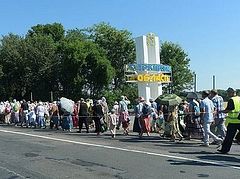
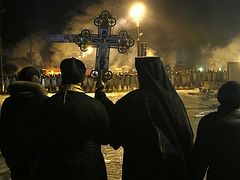

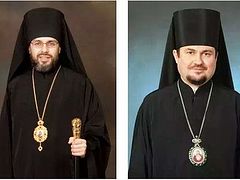
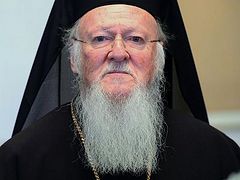
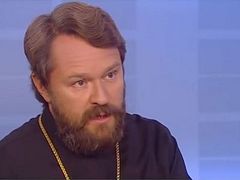
if God's wrath befalls the Russian Church again because of this infection, a similar one ought to befall on the Phanar, because of an infection with more than similar proportions. An infection of which some symptoms have been named by anthony. Some other symptoms:
-Theft in 2017-2018 of a large amount of money (about 10 million US dollars) from the budget for the construction of the Orthodox Church of St. Nicholas in New York. The withdrawal of these funds abroad happened on the orders of Bart.
- Calling qurans holy and offering them as a gift to a muslim
- Stating that the Fathers at the time of the Schism were unfortunate victims of the serpent who is chief of all evils